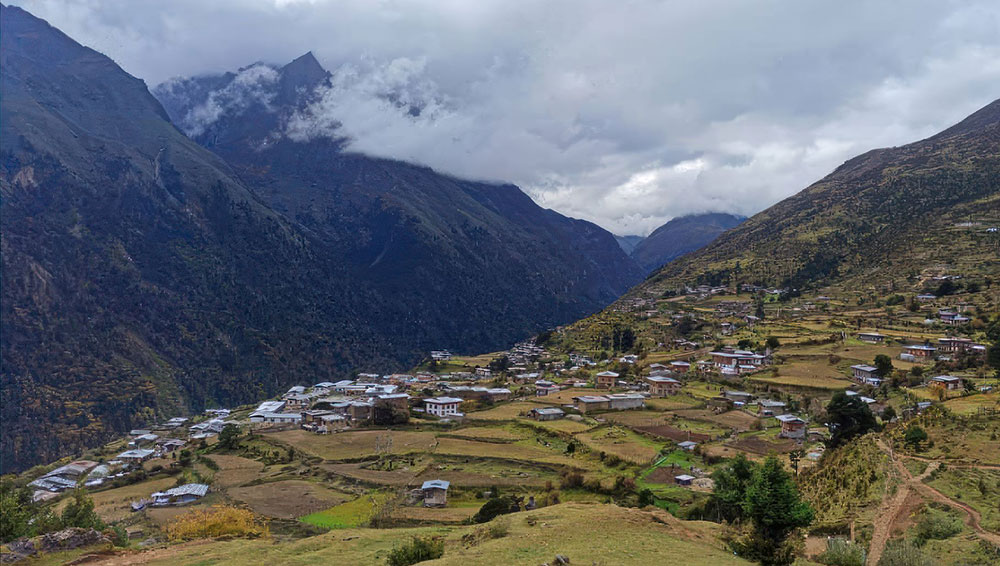Choki Wangmo
Nine years ago, Minjur Dorji accompanied his uncle to Laya. Every year, the father of two from Trashigang spends nine months in the picturesque valley that has now become his second home.
He was among the first carpenters from Radhi who found a source of income in the highlands, where the natives spend their times in the deep mountains searching for the highly valued cordyceps and herbs.
Over the years, 21 of Minjur Dorji’s friends from Radhi have made their homes in Laya, some marrying into the highland families. They work in groups of three—a mix of carpenters and construction workers. They earn more than Nu 500,000 from building a two-story house.
“Laya is our Australia,” joked one of them.
They are content with the earnings. The money earned directly goes into their pockets. “Except for the cold, we really enjoy our lives here,” said a construction helper. The house owners feed and host them for months.
They can build about five houses in nine months if the construction materials are readily available.
Minjur says that the money he earned from building houses were used in educating his two children. The proud father says that they are already studying in colleges, soon giving him respite from the chilly mountain air that is becoming more challenging for his ageing body.
The carpenters are highly sought after. “Before we complete one house, we are booked by someone else,” says Minjur. With substantial income from the cordyceps sales, people in the mountains build a new house within a few years.
The houses are traditional with prominent use of stone.
During the paddy cultivation season, the men leave in haste for their villages. Known as the “Rice Bowl of the East”, people in Radhi are popular for the Sorbang rice variety.
“Agriculture is equally important to sustain our family back home,” one said.
On average, farmers harvest 40 kilograms of rice per acre of land. With a total cultivated rice area of 1,239 acres, it takes them 90 days to complete the transplantation process.
The increasing cases of human-wildlife-conflict have forced many local residents to look for alternative sources of income outside. Some of them took up community contract works but the earning was minimal and the works involved lots of risks.
But, as the cordyceps become rarer by the year, Layaps might not have the financial power to build new houses frequently, or they might have to build their own houses, as said by Namgay from Lungo.
Minjur Dorji doesn’t believe this. He says that the local residents do not have the expertise.
“The craft takes time to perfect,” he grins.


